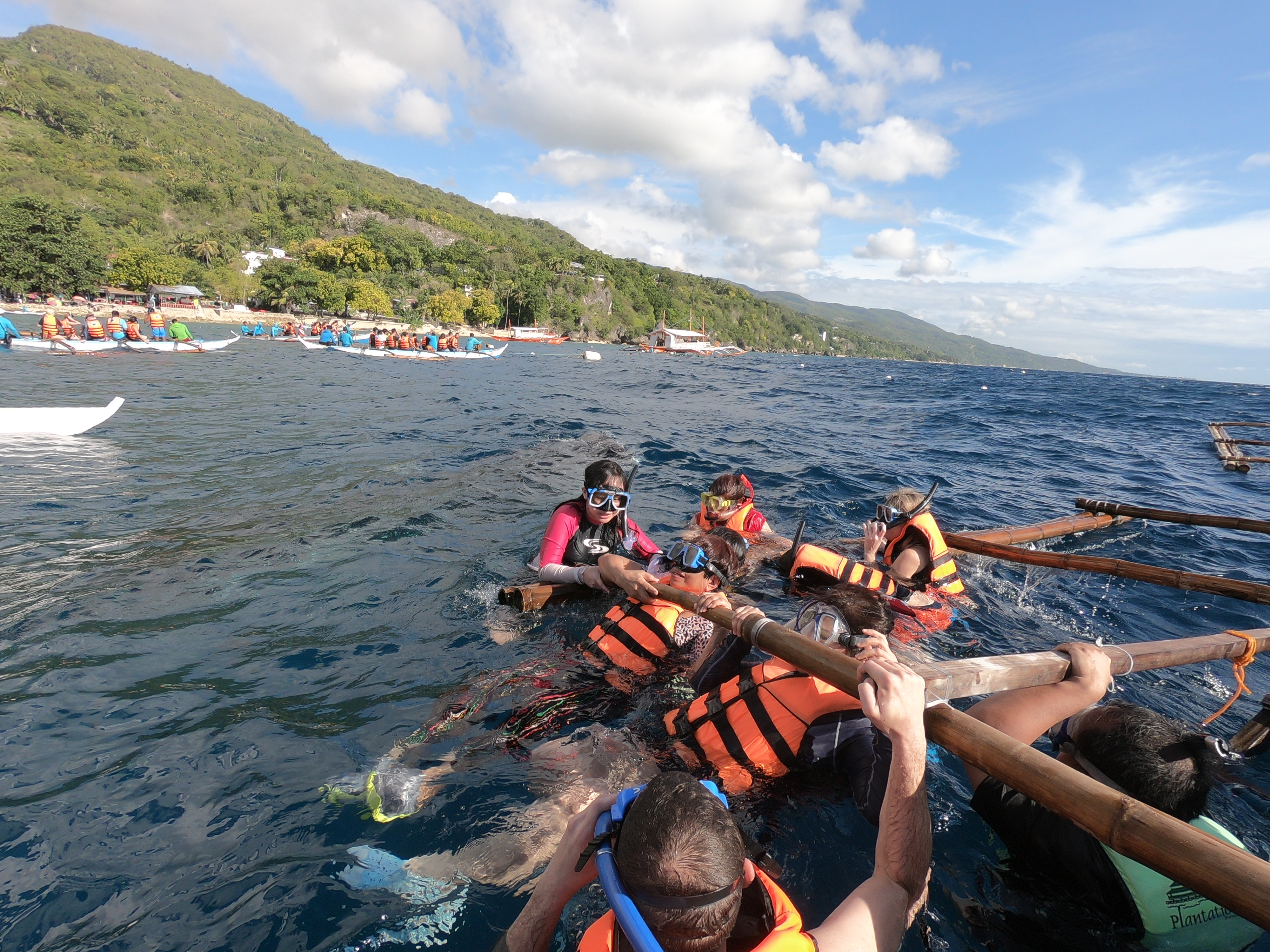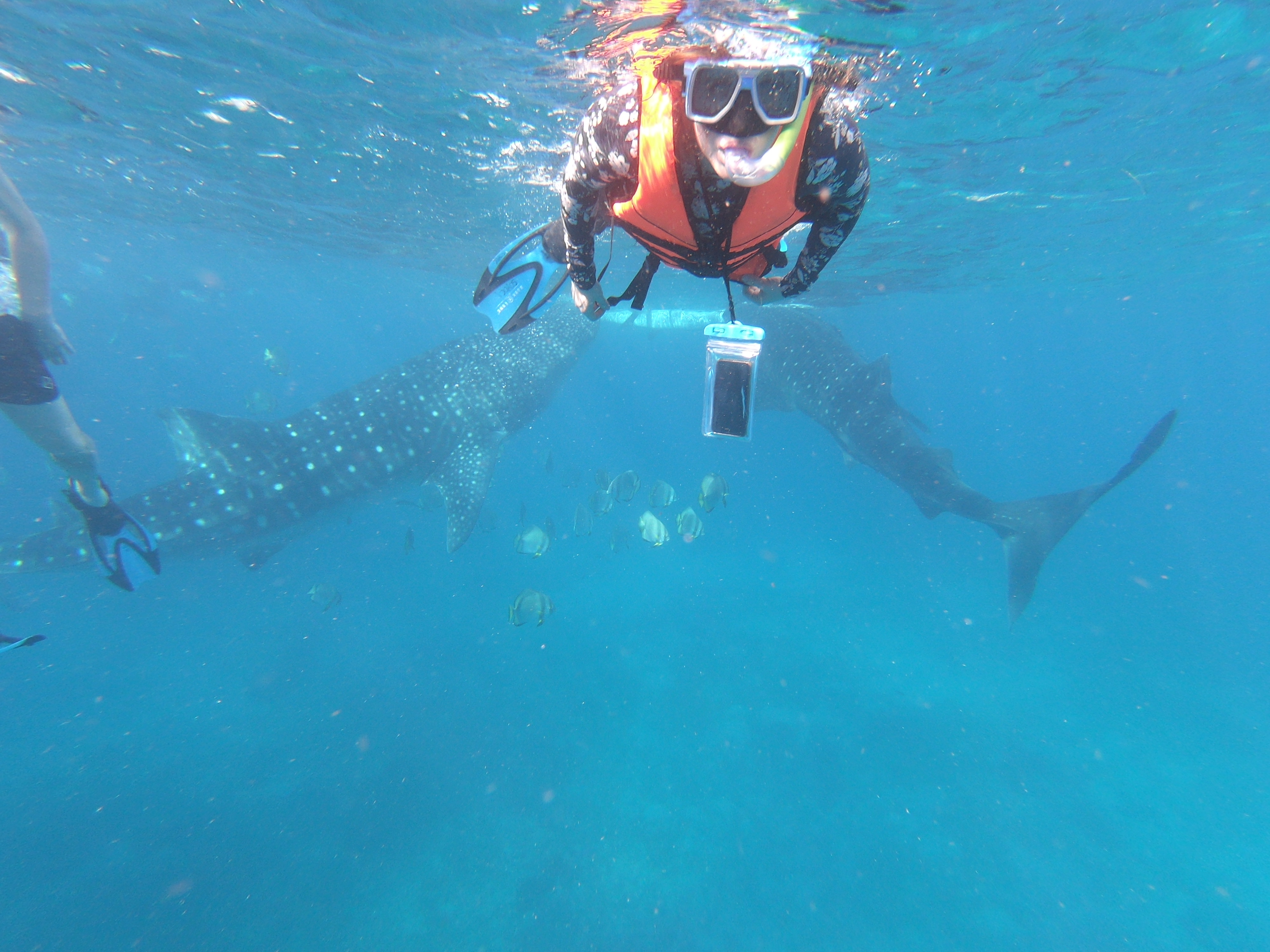Swimming with Whale Sharks in Oslob, Cebu


We just got back from our family trip to the Philippines! We’ve visited family in The Philippines and Australia every year since our honeymoon. It’s always a fantastic time: we visit, catch up with Mark’s (big!!) extended family, and have exciting adventures.

Mark’s extended family on his paternal side, Australia 2017
This year my favorite day was the one we spent whale watching and canyoneering in Cebu. Though our family lives in Quezon City (right outside of Manila) we always take an additional trip away from the traffic and pollution of the Philippines’ largest city to have some adventures. Previous years were in boracay, puerto princessa, Palawan, Coron, Palawan, Hong Kong, and the Great Barrier Reef. This year we went to Cebu.

Sunrise from the balcony of our hotel
Cebu is consistently ranked amongst the best islands in the world, according to Condé Nast. It’s known for incredible diving, white sand beaches, Spanish and Roman Catholic influences, and its lechon.

Island hopping from our first day in Cebu
We started out the day swimming with whale sharks in Oslob. Whale sharks, known in Cebu as butanding, are the largest known extant (still living) fish species. The measure in at 18 meters and weigh more than 34 tons. When the guides mentioned they were the biggest fish, I was confused, because I didn’t realize a shark was a fish, unlike whales or dolphins. …I guess elementary school was a long time ago…🤦♀️

A decade or so ago, a fisherman came across a whale shark in this particular area and fed him some prawns (shrimp, for my American friends). He continued to see this whale shark and fed him, and the word got out amongst the whale sharks. This makes sense because in general, whale sharks make ocean-wide migrations but also congregate in areas of high food density.

Mark’s cousin Angel
Fast forward to today: each morning there is a large team of whale sharks in this area. In the center, there is a man on a boat feeding them. Around, there are boats hooked up to a line system with the engines up, careful not to hurt the fish, and a whole lot of travelers with snorkels on.

The whale sharks were enormous! It reminded me of seeing a full size shark display like they have at natural science museums—but they were alive and right there! It was unbelievable how big they were and thrilling being near them.

I obviously had no idea what to do with my body when he was taking these pictured
One of the rules of viewing the whale sharks is that you must keep a distance of 5 meters between you and them at any given time. I noticed at one point I was too close to one, so I turned in the other direction to swim further, only to find another one just as close! I was surrounded!

This was later on with two different whale sharks. I still didn’t know what to do with my body.
It really frightened me! What I didn’t realize is that whale sharks are filter feeding. This means that they eat by straining food particles and suspended matter from the water with a specialized filtering structure. In other words, their diets consist of things that are far smaller than you and I.

Filter feeding animals like whale sharks, krill, clams, sponges, Baleen whales flamingos, some ducks and many fish are help to clarify water and benefit our ecosystem. That means these creatures aren’t just another pretty face: they’re helping our environment. This contributes to the disappointment in learning that whale sharks are indeed an endangered species.

Another rule was that those swimming with the sharks were not allowed to have on any sunscreen, lotions, or scented beauty products prior to getting into the water with them. Those who did were told to rinse off in available showers prior to getting onto their boats. I knew this ahead of time so I had on a long sleeved rash guard and thin yoga pants to protect my pale skin, ha!

My only regret is that I didn’t remove my life vest so that I’d have better control of my swimming and would have gotten a better picture.

My friend Bryan got a few good shots with the sharks
If you’re not a fan of snorkeling or swimming in open water, no worries! You can still watch the whale sharks from the comfort of the boat. These boats were far smaller than we expected, generally the boats we take in the Philippines look more like these paraws:

We thought Mark and I would be able to take turns, one of us caring for Elvis while the other swam along with the fish. Unfortunately the boat was closer to a canoe with outriggers (or katig) on each side. But! Mark was able to see the fish up close still as the came up frequently to the top of the water. Elvis was quickly lulled to sleep by the rocking of the boat.

Swimming with the whale sharks was amazing, but it wasn’t even my favorite part of the trip! Next post I’ll talk about canyoneering, and how our family needed to be rescued after jumping off a cliff!
I love the photos, thanks for sharing! Greetings from London.